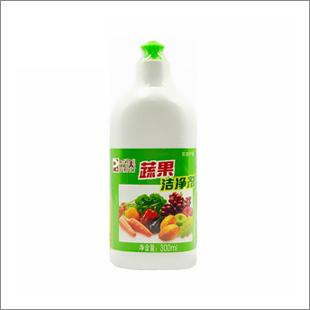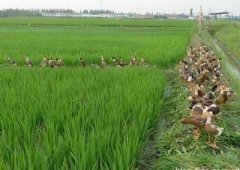Is fruit and vegetable detergent really okay? How to wash fruits and vegetables and how to remove pesticides from fruits and vegetables
Now that many people have doubts about pesticides, and some manufacturers have launched special detergents for fruits and vegetables, what should be used to wash fruits and vegetables? According to the agricultural drug toxicology test of the Council of Agriculture, it is recommended that if people wash fruits and vegetables, they can be washed or rinsed with flowing water, and there is no need to soak salt water, baking soda powder or vegetable and fruit detergents.

In order to understand the removal effect of simple pre-food treatment methods such as cleaning, peeling, peeling and peeling on pesticide residues in fruits and vegetables, the Drug Institute carried out tests on the effects of pre-food treatment on pesticide residues in fruits and vegetables in the past three years. after peeling of pineapple, citrus and litchi, the removal rate of pesticide residues was 40% to 100%, and 47% to 92% of strawberries were cleaned and removed. After stripping 2 to 3 outer leaves of cabbage, the removal rate of pesticide residues reached more than 90%; after 1 minute of cleaning of cowpeas, cucumbers, Qingjiang vegetables, sweet peppers and other vegetables, the removal rates of pesticide residues were 43 to 70%, 28 to 93%, 75 to 85% and more than 80%, respectively.
The drug agency recommends that the grapes should be cut off and then washed before washing. Wash before peeling.
The Institute of Drug Administration also recommends that the principle of pre-food treatment is to wash before peeling, peeling and cutting, so as to prevent pesticide residues on the surface of fruits and vegetables from seeping into the tissue from the incision. Chinese cabbage and other leafy vegetables can be spread out in flowing water and then cut; for example, cabbage and other leafy vegetables, as most pesticides remain in the outer leaves, first peel off 2 to 3 outer leaves, and then cut appropriate amount, directly soak in flowing water.
On the other hand, fruits and vegetables such as tomatoes and sweet peppers can be washed with a soft brush on the uneven surface, and then go to the pedicel and cut; legumes such as peas are first washed with flowing water, and then peel off the head and tail and old silk; small berries such as grapes are cut off with stems before cleaning, and then washed with flowing water; such as pears and other pears, rinse the peel with flowing water first, and then peel and eat.
According to the Institute of Medicine and Drug Administration, buying fruits and vegetables in the season, with a label or traceable origin, and washing them correctly can make the whole family eat safely and healthily.
- Prev

- Next

Ecological environment protection: the natural factor of agriculture, strengthen the ecological environment protection with the natural enemies of insect pests
Human beings need food and society needs agriculture, so what can we do to better develop agriculture? is agriculture bound to destroy the ecology? In order to reduce the use of pesticides and protect the ecology, the upcoming special exhibition of "sharing Nature" will be held by the Zhi Nong Museum of Huabo Waipu Park in Taichung.
Related
- A course of planting techniques and methods on how to grow carrots
- How to plant the latest tulips?
- Is it better to pick tea in the morning or in the afternoon? When is the best time for tea to be picked? what is the third or fifth tea?
- Launch Yuanxiao Happy combination Haocha + Tea Yuan healthy Taste
- Penghu Tourism "Fireworks 20 Parade with You"
- 2022 West Lake Happiness holds "Digital Revitalization Voucher" and draws iphone13 and laptop.
- Banqiao Fuzhou social houses are designed to change start-up combined with police elimination to create a safe and livable environment
- The convenient measure of "mechanical weeding" in Xinbei has been abused and the Agriculture Bureau has imposed heavy penalties on the illegal land consolidation.
- Changgeng University Joins Hands with Four Memory Factories to Rescue Memory Talent Shortage
- The list of Taiwan's top 100 MVP managers is listed by the Director-General of the Farmers' Association of Sanxia District.

